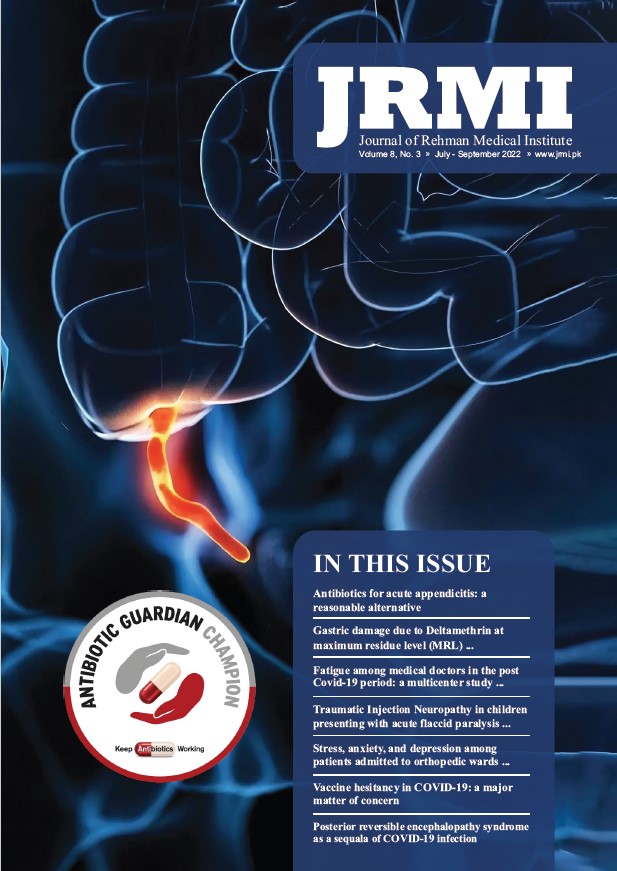Vaccine hesitancy in COVID-19: a major matter of concern
DOI:
https://doi.org/10.52442/jrmi.v8i3.484Keywords:
Covid-19, Vaccine, Vaccination Hesitancy, Immunization, ImmunityAbstract
Introduction: Coronaviruses live in but do not infect animals. They may mutate as they transfer to other species. Eventually the virus can jump from animal species and infect humans. Although researchers are not aware how people were infected at the start of COVID-19 pandemic, but subsequent evidence indicated that close contact between people led to spread of the virus.
Objective: To assess the hesitancy of a diverse group from the general public regarding Covid-19 vaccination.
Materials & Methods: The cross sectional descriptive study was carried out in Peshawar, Khyber Pakhtunkhwa, Pakistan, from June 07, 2021, to July 11, 2021, on a diverse sample of the general public through purposive and snowball sampling by utilizing social media platforms. Informed consent was obtained prior to enrolment of participants in the survey. Questionnaires contained demographic data, and 5 items related to vaccine hesitancy; they were distributed electronically via WhatsApp, Facebook, telegram and other media platform via investigators contact. Data were analyzed for descriptive statistics by MS Excel and SPSS 26.
Results: A total of 410 responses were received, of which 190(46.3%) were females and 220(53.66%) were males. Most of the responders, 316(77.07%) were in the 20-30 years age group, and 220(53.66%) were healthcare workers. The majority, 247(60.24%) of responders had not received the Covid vaccine at the time of completion of the survey. An overall vaccine hesitancy rate of 16.7% (range 5.4%-38%) was documented for the five questions, the maximum being due to apprehensions about vaccine side effects.
Conclusion: Vaccine hesitancy is an important factor hindering immunization against COVID-19, even in healthcare workers. Targeting the hesitant population about vaccine safety and efficacy should be an effective way to overcome the issue.




